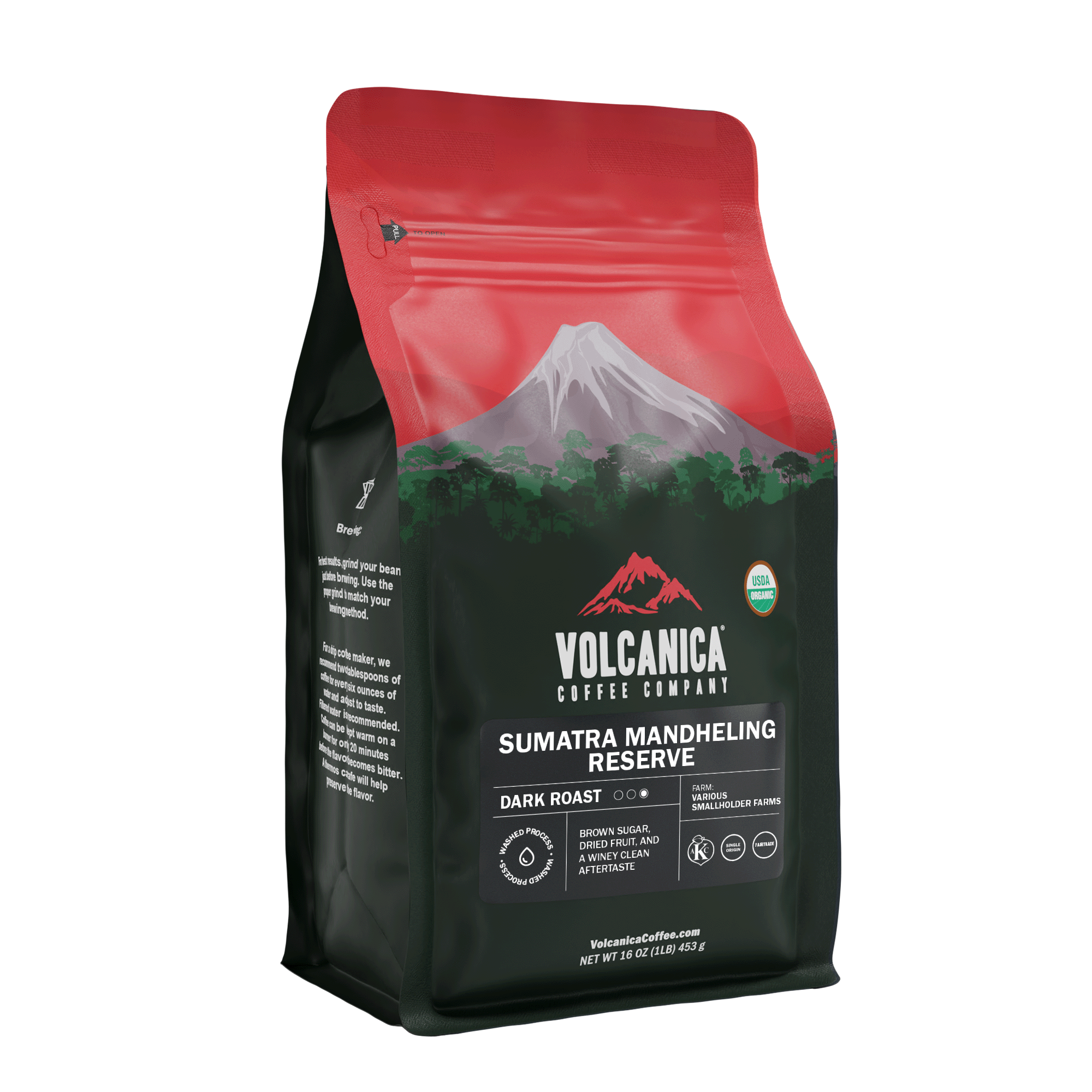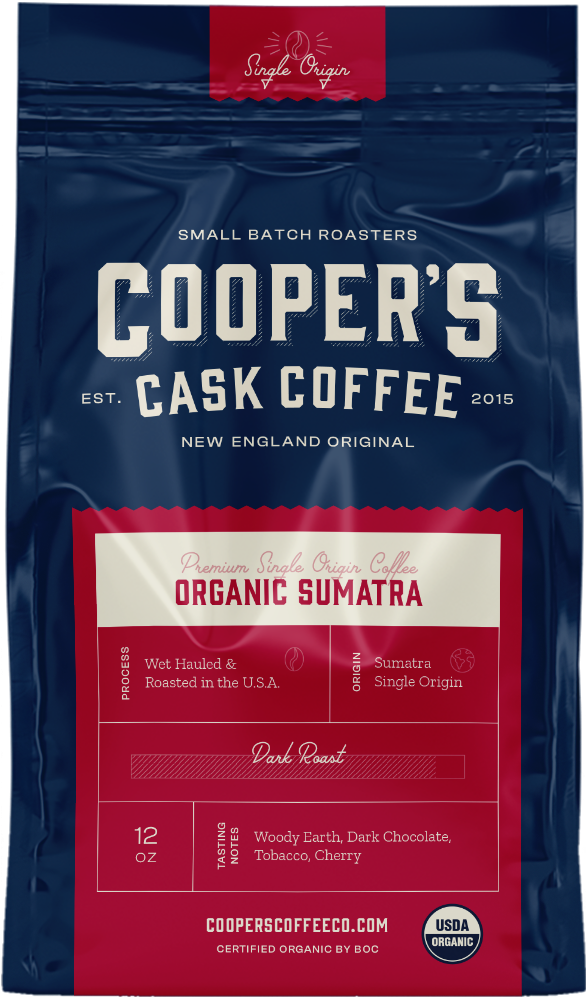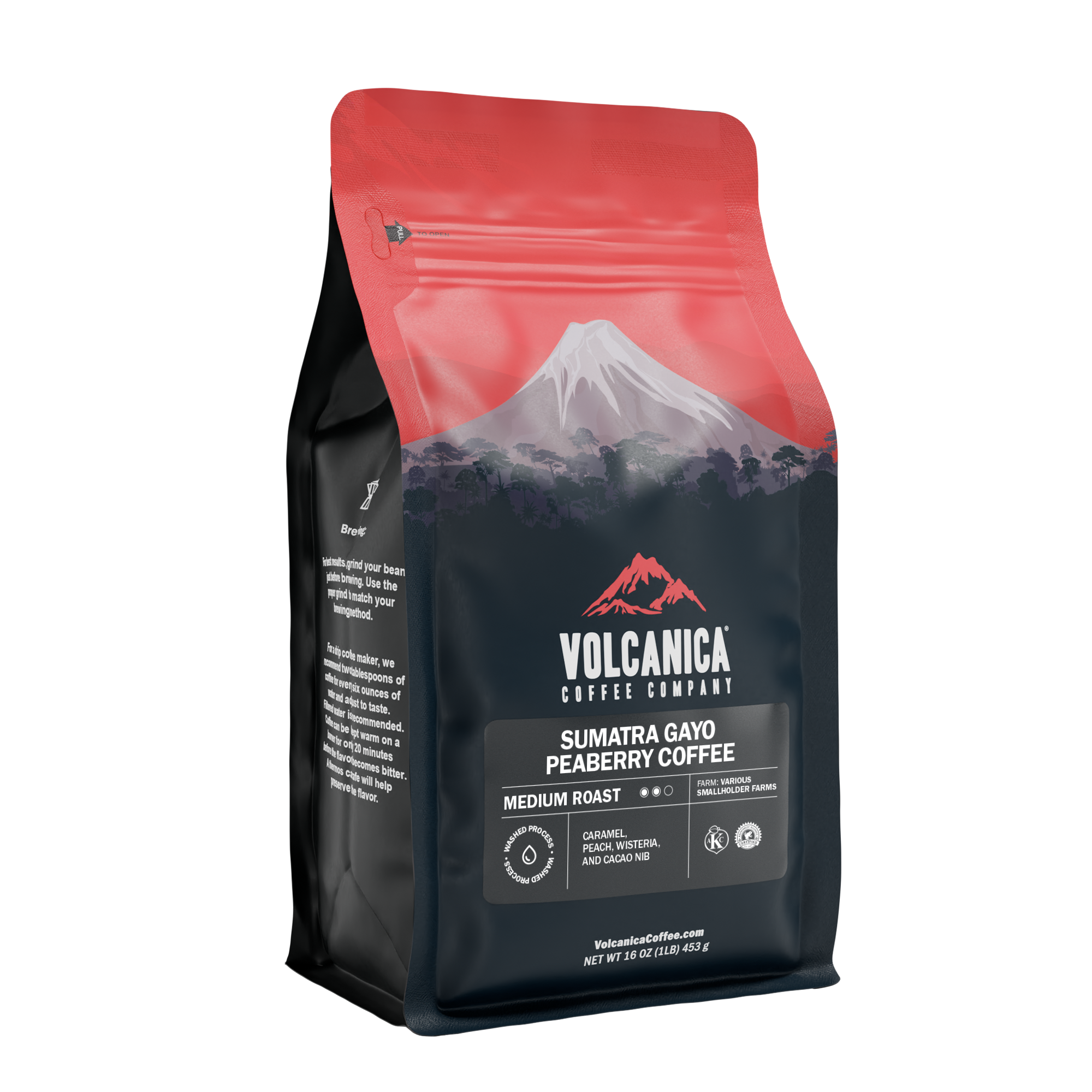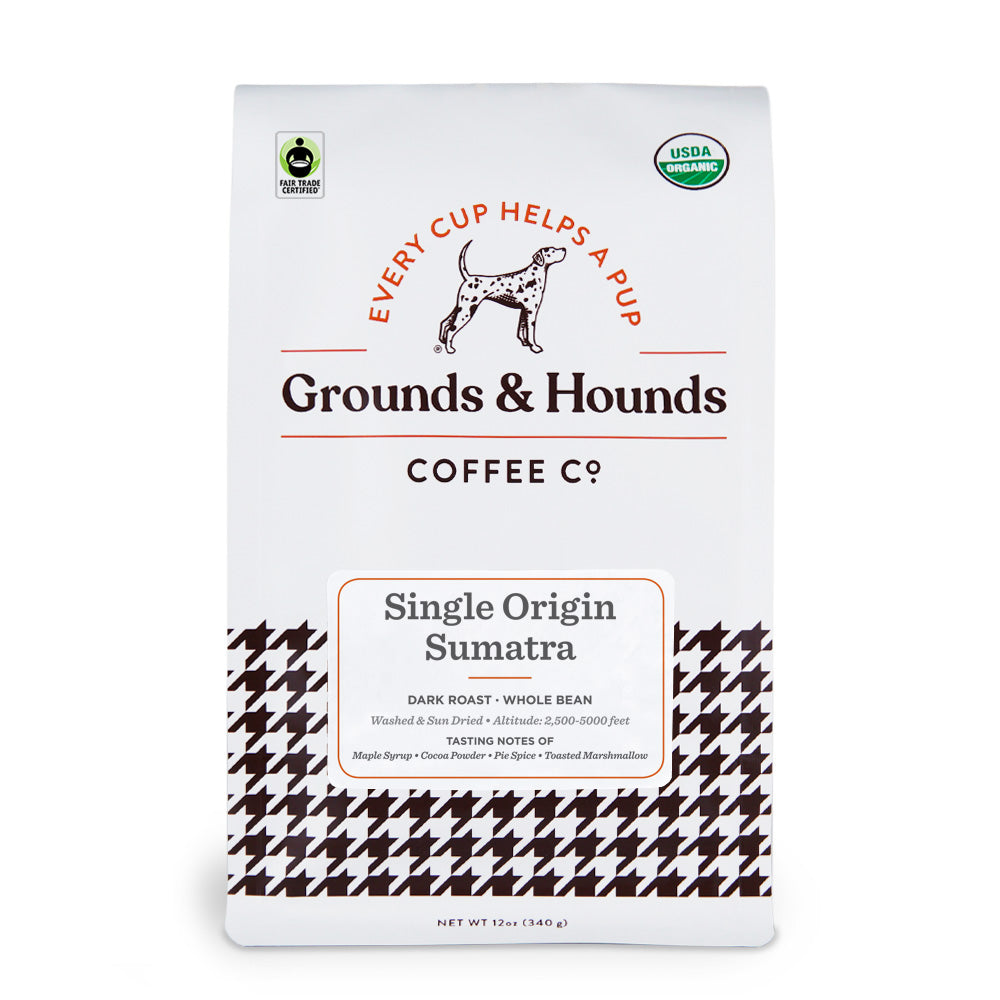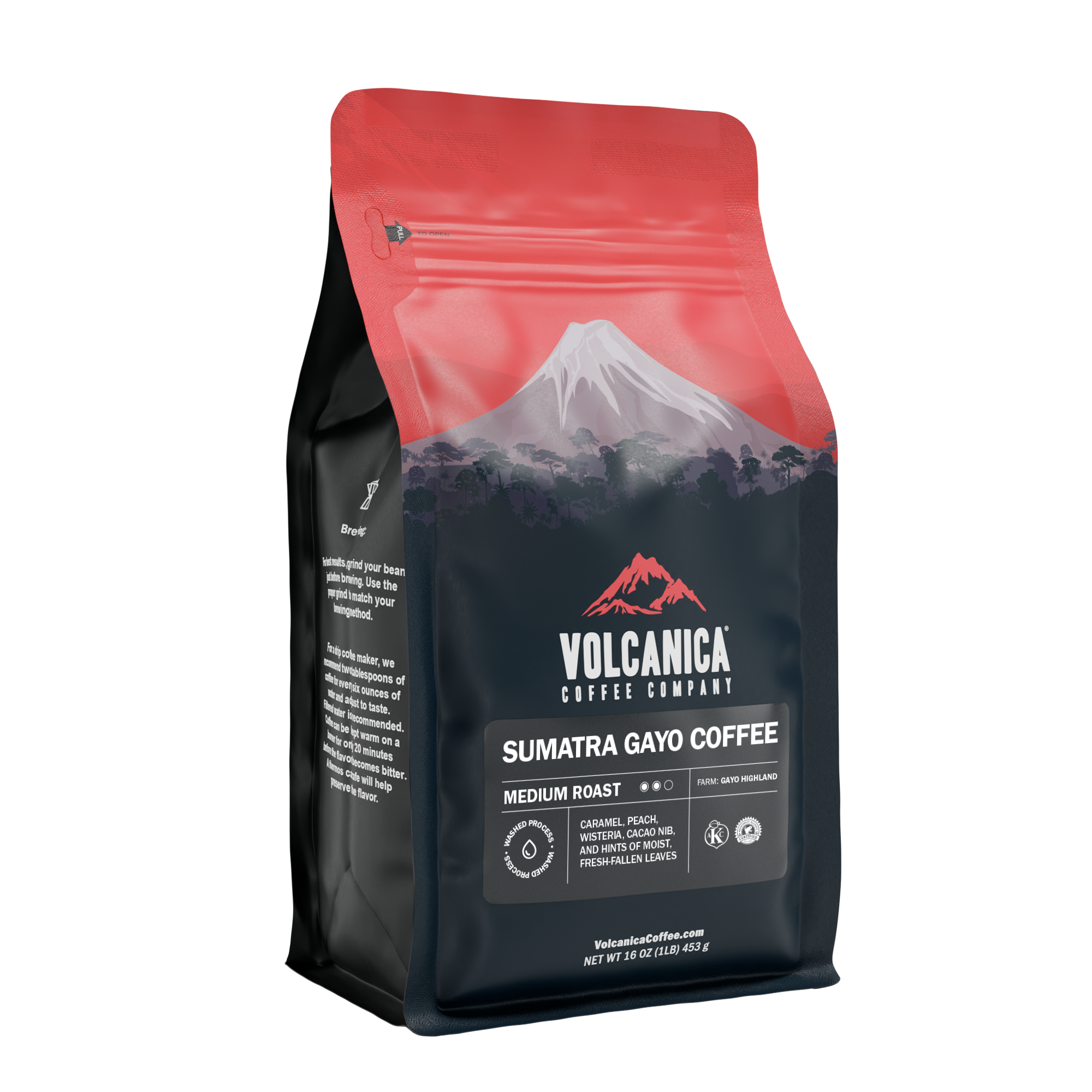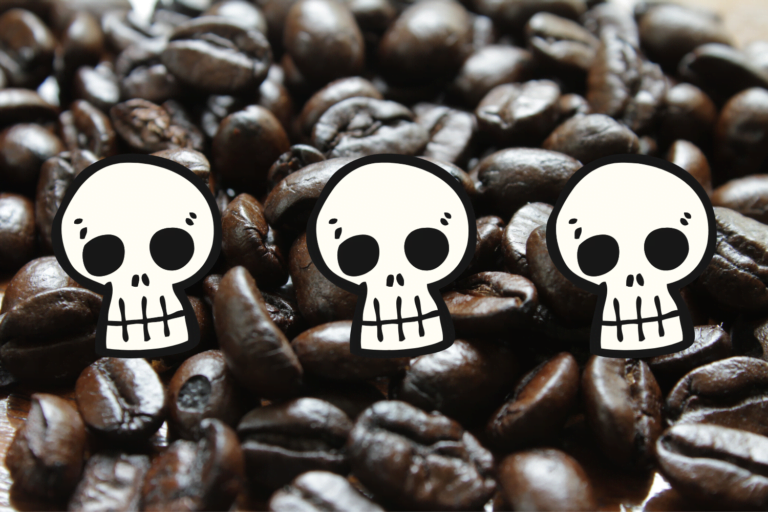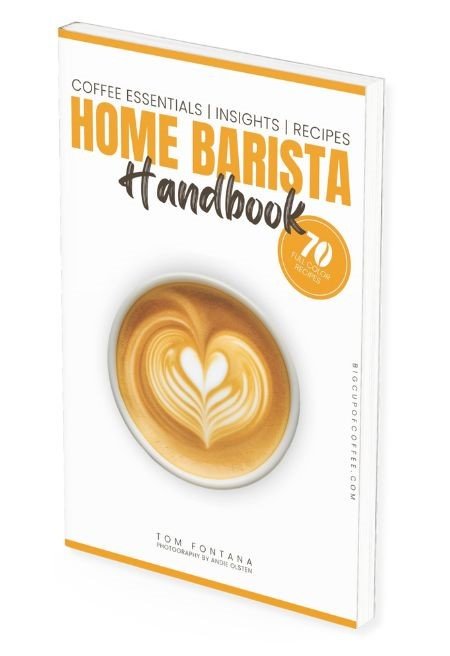10 Best Sumatra Coffee: Unusual Beans with Extraordinary Flavor
What makes Sumatra coffee so special and why do many people either love it or not? We’ve spent hours putting together our list of the best Sumatra coffee beans for your enjoyment.
Ever wonder what makes Starbucks coffee unusually delicious? It’s all in the choice of coffee beans! As a matter of fact, Starbucks uses Sumatra coffee beans in some of its coffee blends to balance the taste of its roast. That’s why Starbucks is one of the primary buyers of the Sumatran roast.
TL;DR Our Favorite Picks
Here are our top three Sumatran coffees:
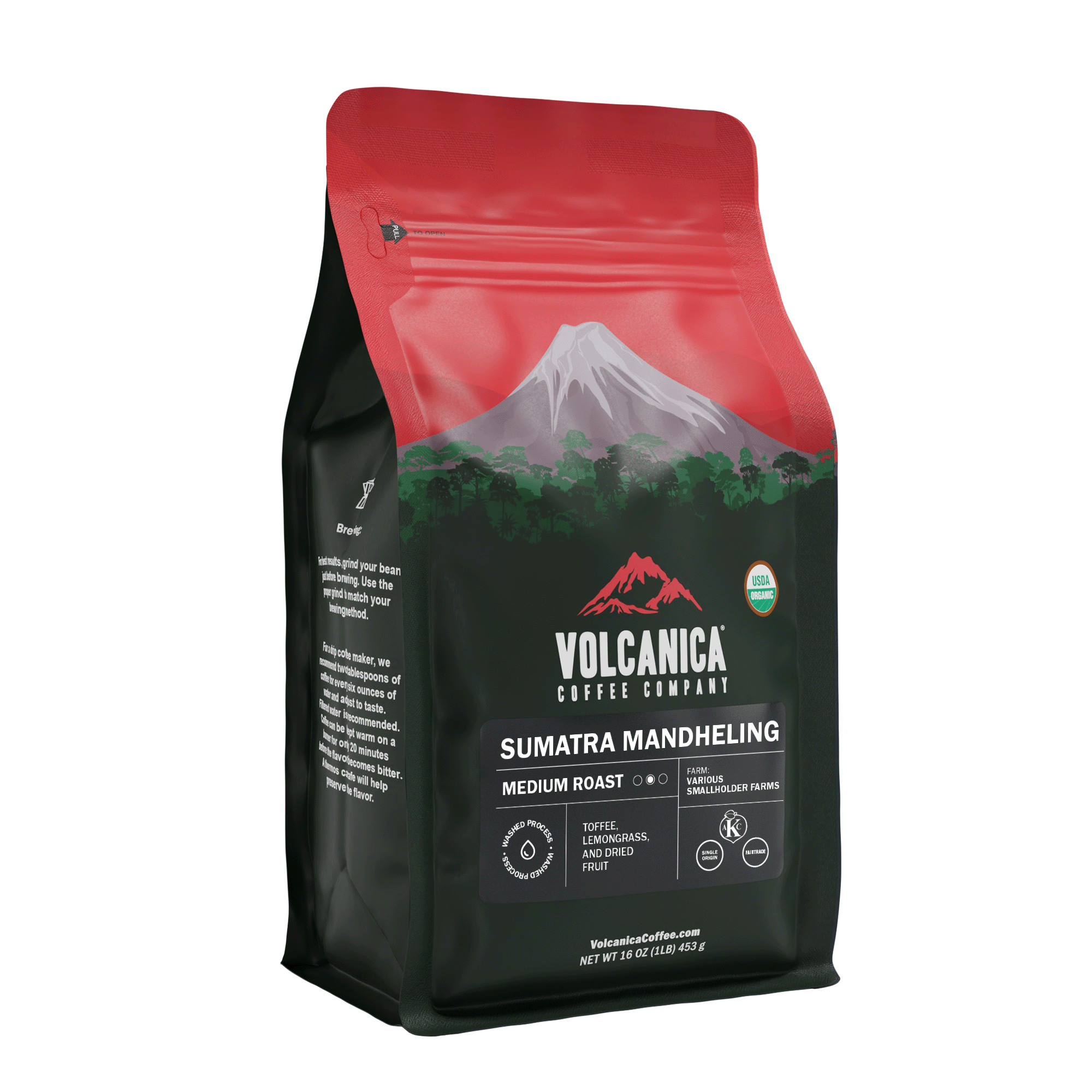
- Smooth and rich body with low acidity
- Syrupy with earthy flavor
- USDA Organic and Fair Trade
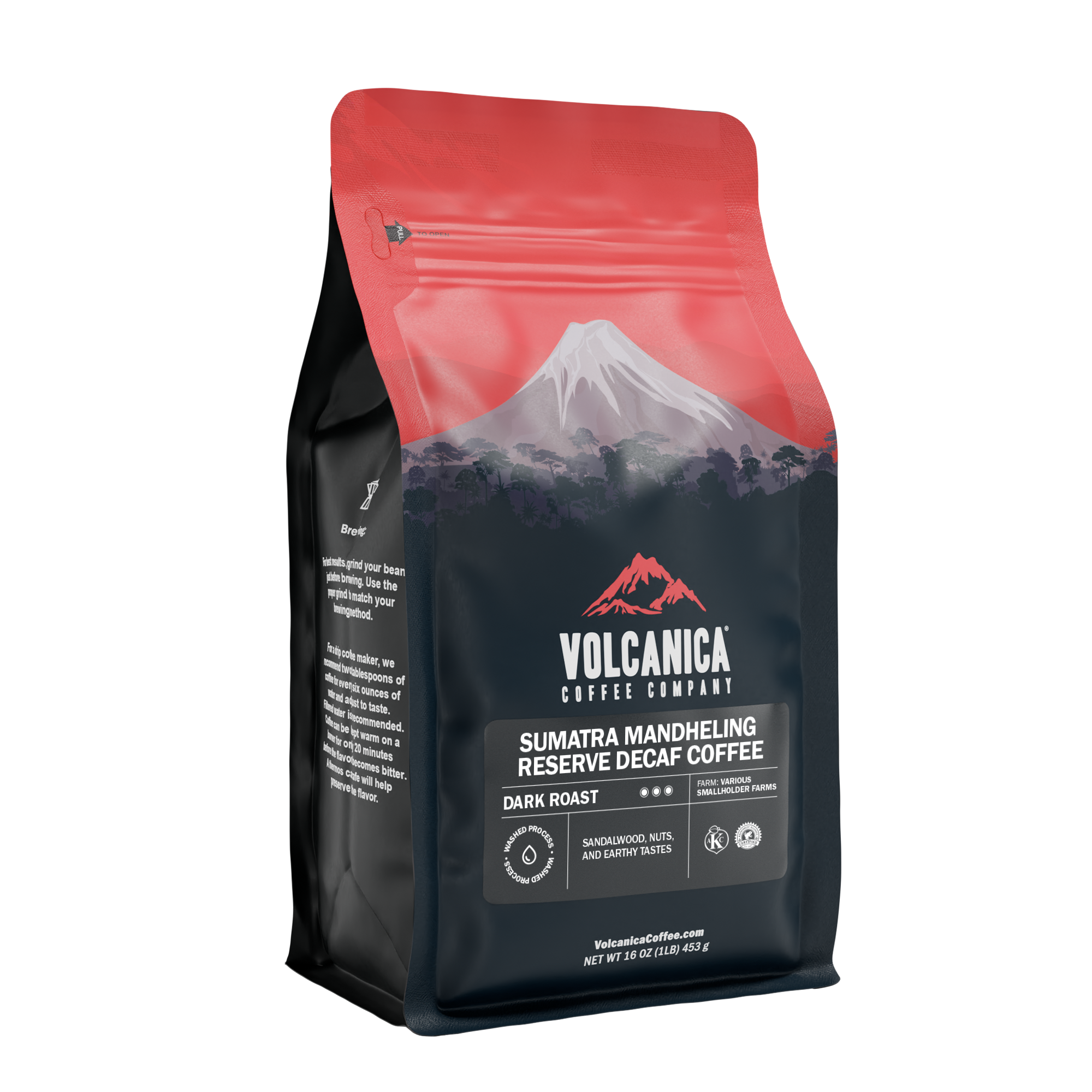
- Decaf dark roast
- Sandalwood, nuts, and earthy notes
- Low acidity

- Chocolate and stone fruit notes
- Fair Trade and Rainforest Alliance Certified
- Combined organic and water-processed decaf
What is Sumatra Coffee?
Sumatra coffee exhibits an earthy, mossy, and spicy flavor. Some love the earthy and depth of flavor of this coffee blend. Others despise it and prefer coffee blends from Ethiopia or Costa Rica. If you’re searching for premium gourmet coffee from the Sunda islands, Mandheling, Lintong, and Ankola are some of the recommended coffee.
Where does Sumatra coffee come from?
Sumatra is generally harvested from the Sunda Islands. Sunda is a group of islands in the Malay archipelago that is also located in the green coffee belt. It is divided into two principal regions: the Greater Sunda and the Lesser Sunda.
The Greater Sunda is composed of big islands where Sumatra is included along with Java, Sulawesi, and Borneo. The Lesser islands are islands that you may find in Maritime Southeast Asia, north of Australia.
Although Indonesia has 17,508 islands, with 6000 of it being inhabited, Sumatra is one of Indonesia’s significant islands with coffee as its prime crop. It’s an island in Southeast Asia that is ideally suited for Arabica coffee cultivation.
The Sumatran soil is well-balanced due to ando soils, a fertile soil developed from the andesitic volcanic sediments. These sediments came from the different volcanoes that you can find on this island. Two of the most active volcanoes in Sumatra are the Marapi and Karinci.
Aside from these, the island experiences a tropical climate which is ideal for growing Arabica coffee plants. There are seasons of rains and sunshine throughout the year. That’s why Sumatra is considered as one of the coffee paradises in Southeast Asia.
Facts about Sumatra coffee
Coffee was first introduced to Southeast Asian soil back in the 17th century when the Dutch brought coffee to one of the Greater Sunda Islands, Java. Initially, the Dutch first brought the Arabica beans in the Indian soil to cultivate but failed miserably.
However, the Javanese were forced to switch to Robusta by the 19th century. A strain of rust disease destroyed thousands of Arabica coffee plants. For love for Arabica coffee beans, small coffee farmers still planted this variety of coffee using the Dutch equipment and methods. Most of the Arabica coffee bean imports come from small coffee farms in Sumatra and Sulawesi.
To understand the origin of the Sumatra Coffee, here are some interesting Sumatran Coffee facts.
- Sumatra coffee is processed using the wet hull method or Giling Basah.
- The Giling Basah method involves the following processes: coffee cherries’ outer skin removal, drying the mucilage for a day, rinsing, and drying coffee cherries for the second time. Lastly, the cherries are hulled and processed.
- The Sumatra coffee has two varieties: the regular bean and the aged bean.
- The aged Sumatra coffee bean has spicy notes, which is unique to this bean. When blended with other coffee beans, it amplifies the flavors of different coffee beans.
- The famous Sumatra Mandheling coffee is named after the Mandailing natives that cultivate the top specialty coffee. This Sumatran coffee grows in the volcanic soil in an elevation between 2500 and 5000 feet above sea level. It is produced in the coffee farms near Padang, the capital city of the West Sumatra province.
- Sumatra coffee is independently cultivated by small coffee growers, with farms sizing to roughly 2.5 acres. These farms work together as a structured cooperative to sell their coffee products and divide the profits equally. (Please read our Pachamama Coffee Review to learn more about coffee cooperatives!)
10 Best Sumatra Coffees
If you’re looking for the best, here are Big Cup of Coffee’s top picks.
1. Volcanica Sumatra Mandheling Coffee
The coffee beans of the Sumatra Mandheling coffee by Volcanica are sun-dried to extract the beans’ unique flavors. Afterward, these are processed semi-washed. Read our full Volcanica Coffee review to learn more.
- Origin: Sumatera Utara (North Central Sumatra)
- Roast level: Medium roast
- Cup notes: The coffee is well-balanced, has a full body with mild acidity and clean aftertaste
- Tasting notes: With hints of brown sugar and winey dried fruit
- Brewing Method: Drip, French Press, Pour-Over
2. Volcanica Sumatra Mandheling Reserve
The Mandheling Reserve is the dark roast version of the Volcanica Sumatra Mandheling. The beans are sun-dried and processed semi-washed. Read our full Volcanica Coffee review to learn more.
- Origin: Sumatera Utara (North Central Sumatra)
- Roast level: Dark roast
- Cup notes: It has a rich, heavy body, well balanced with mild acidity.
- Tasting notes: With hints of brown sugar and winey dried fruit
- Brewing Method: Drip, French Press, Pour-Over
Sumatran Dark Roast Coffee - Mandheling Reserve, a dark-roasted Indonesian coffee, is celebrated for its smooth, heavy body, low acidity, and rich, exotic flavor with an intense, syrupy aftertaste with low acidity.
This coffee is distinguished by its unique processing methods in Sumatra and a longer roasting profile to enhance its natural flavors, such as brown sugar, dried fruit, and a winey aftertaste. It is also USDA Organic, Fair Trade, and Kosher.
3. Cooper’s Cask Coffee Sumatra Single-Origin
This Cooper’s Cask Sumatran coffee boasts an impressive flavor profile with notes of woody earth, tobacco, tropical fruits, vanilla, and caramel. It uses grade 1 single-origin beans from Sumatra’s Lintong region and underwent the brand’s signature aging process. Read our full Cooper’s Cask Coffee review to learn more.
- Origin: Lintong Region (North Central Sumatra)
- Roast level: Dark Roast
- Cup notes: Bold, smooth coffee with dark rich flavors and rustic, earthy tones.
- Tasting Notes: Has noticeable flavors of woody cedar, dark chocolate, and a slight taste of dark stone fruits with hints of tobacco undertones.
- Brewing Method: French Press, Auto-drip, Espresso, Turkish
Cooper's Cask Coffee's Sumatra coffee, sourced from the Lintong region, is a full-bodied, dark roast with a unique, earthy flavor profile. The beans, which are grade 1 and wet-processed, are partially sun-dried, resulting in a coffee with a fuller body and lower acidity.
4. Volcanica Sumatra Gayo Peaberry
More Volcanica? This isn’t your traditional Sumatra coffee, but their Peaberry variety. The Gayo Peaberry of Volcanica from Sumatra is cultivated between 4,500 and 6,000 above sea level. The Sumatran Peaberry is famous for its smooth cardamon flavors and herbal sweetness with vibrant acidity. Read our full Volcanica Coffee review to learn more.
- Origin: Ache Province (Northern Sumatra)
- Roast level: Medium roast
- Cup notes: Has a smooth, full body with sweet tones and crisp, layered complexity
- Tasting notes: With hints of caramel, peach, wisteria, and cacao nibs.
- Brewing Method: French Press, Pour-over, Drip
Sumatra Gayo Peaberry Coffee boasts a low acidity and rich flavor profile with notes of caramel, peach, wisteria, and cacao nib. This single-origin coffee, part of the Orang Utan Coffee Partnership for sustainable farming, is Direct Trade and Kosher Certified, with a unique peaberry variety that constitutes only 5% of the crop.
5. Grounds and Hounds Sumatra Single-Origin
Grounds and Hounds’ single-origin Sumatran coffee is a limited batch of specialty-grade coffee beans. It is 100% organic and Fairtrade-certified. For a mouthwatering taste and pleasing aroma, rounds and Hounds used the traditional European style of roasting. This roasting style helped the Sumatra coffee develop a rich and bold flavor while eliminating the burnt and bitter taste found on the beans. Read our full Volcanica Coffee review to learn more.
- Origin: Sumatra
- Roast level: Dark roast
- Cup Notes: smooth, rich, and bold with a smoky, clean aftertaste
- Tasting notes: With hints of maple syrup, cocoa powder, pie spices, and toasted marshmallow
- Brewing Method: French Press, Pour-over, Cold Brew
Grounds & Hounds Single Origin Sumatra is a specialty grade, 100% organic, Fair Trade certified Sumatran dark roast. It features a bold, rich, smoky flavor with maple syrup and toasted marshmallow aromas, complemented by cocoa and pie spice notes.
6. Volcanica Sumatra Gayo
The Sumatra Gayo coffee of Volcanica has a sweet taste and clean finish. The processing method used is washed, and the cherries are sun-dried. The processing method enabled the coffee beans to develop a sweet, fresh, earthy, and spicy coffee with an exotic earthy aroma. Read our full Volcanica Coffee review to learn more.
- Origin: Aceh region
- Roast level: Medium roast
- Cup notes: Sweet-toned and clean with mild acidity and gentle finish
- Tasting notes: With hints of caramel, peach, wisteria, and cacao nibs.
- Brewing Method: Pour-over, Drip, French Press
Grown in Indonesia's Gayo Highland Farms, this coffee is recognized globally for its high quality, characterized by a sweet, clean, and earthy flavor with caramel, peach, and cacao nib notes and low acidity.
Its unique taste comes from a washed process and medium roast, with beans cultivated in a sustainable, chemical-free environment, contributing to its distinct flavors.
7. Fresh Roasted Coffee Sumatra
The Sumatran coffee you’ll find at Fresh Roasted Coffee LLC is described as peppery, earthy, and chocolatey. It is USDA Organic, Fairtrade, and Rainforest Alliance-certified coffee.
- Origin: Northern Sumatra
- Roast level: Medium roast
- Cup notes: Immensely rich, bold, and full-bodied coffee
- Tasting notes: With hints of slight vegetable notes and a powerful chocolatey finish.
- Brewing Method: Drip, Pour-over, French Press
This Sumatran coffee is described as peppery, earthy, and chocolatey, featuring a bold body and a chocolate finish. It also has USDA Organic, Fair Trade, and Rainforest Alliance certifications.
8. Fresh Roasted Coffee Sumatra Mandheling
The Sumatra Mandheling coffee by Fresh Roasted Coffee presents a syrupy Indonesian coffee with rich and earthy flavors. It is incredibly dark and bold coffee without bitterness.
- Origin: Northern Sumatra
- Roast level: Dark roast
- Cup notes: Rich and bold body with mild acidity
- Tasting notes: With hints of dark chocolate
- Brewing Method: French Press, Drip, Pour-over
This Sumatran coffee offers a rich flavor with notes of dark chocolate and a bold finish, suited for lovers of intense, dark roast coffee.
It has a reduced acidity and enhanced body without bitterness. The coffee is wet-hulled and sun-dried, featuring Ateng, Tim Tim, and Bourbon varietals, harvested and exported during peak quality times.
9. Volcanica Sumatra Mandheling Decaf
This is the decaffeinated version of the Volcanica Sumatra Mandheling. It used the Swiss Water Method to remove 97-99% of caffeine, so it’s the most recommended decaf Sumatra coffee today. Read our full Volcanica Coffee review to learn more. Yes, we know in some circles decaf coffee is considered a sin, but I can’t handle the full caff so I think it’s worthwhile to include some decaf options.
- Origin: Sumatera Utara
- Roast level: Decaffeinated medium roast
- Cup notes: Has a rich, heavy body and mild acidity with an intense syrupy aftertaste
- Tasting notes: With hints of brown sugar and winey dried fruit
- Brewing Method: Pour-over, French Press, Drip
A single-origin, decaffeinated coffee from Indonesia that offers a rich, heavy body with low acidity and flavors of sandalwood, nuts, and earthy tastes.
It is processed using the Swiss Water Process for decaffeination and sun-drying, ensuring a 99.9% caffeine-free product without chemical solvents and a low acidity level of 5.3 pH.
10. Fresh Roasted Coffee Sumatra Half Caf
This blend is made up of equal parts regular Sumatran coffee and Sumatran decaf, both organically grown and Kosher-certified. This coffee blend is introduced to give you a rich and bold decaf coffee with no constricting decaf flavor. If you want a cup of joe in the afternoon with full taste, give a half-caf a try.
- Origin: Aceh region
- Roast level: Medium roast
- Cup notes: Rich, heavy and bold with earthy flavors and clean finish
- Tasting notes: With hints of chocolate
- Brewing Method: Pour-over, Drip, French Press
Frequently Asked Questions (FAQs)
Here are answers to some common inquiries about Sumatra coffee:
Sumatra coffee contains caffeine because it is harvested from Arabica coffee plants of the Bourbon and Typica varietals. Most Arabica coffee beans have 1.5% caffeine content. Yet, its caffeine level is less than what Robusta coffee beans contain, which is 2.7%.
However, the coffee beans’ origin is not enough proof to describe the level of caffeine in a bean. Factors including the processing method and roasting can help you understand how much caffeine there are in the coffee beans. Generally speaking, Sumatra coffee has the same caffeine quantity as other Arabica coffees.
For coffee lovers with sensitive stomachs, low-acidity Sumatra is the most recommended coffee blend. This coffee has a low level of acidity because it is cultivated in low elevations. Some roasters reduce the acidity in coffee by mixing stomach-soothing powder with a non-invasive taste. Other coffee blends that are low in acidity are Brazil, Guatemala, Peru, and Mexico.
Since Sumatra is less acidic, it is usually roasted between medium to dark roast. Compared to Mexican and African coffees, Sumatran coffee has more body and mouthfeel finish.
Yes. Many brands also offer Sumatran green coffee beans which are perfect if you’re confident with your roasting skills. Here’s a handy guide on how to roast coffee beans at home.
Conclusion
Sumatra coffee has a rich and bold mouthfeel and a delectable earthy flavor. Not all may like the depth in the character of this exotic coffee, but every cup is worth a try. Many coffee brands recognize its unique flavors, and the international coffee community lauds its flavor profile, which tags Sumatra coffee as one of the best gourmet coffee.
Even Starbucks loves Sumatra coffee, which made them one of the primary buyers of this Arabica coffee from SE Asia. There are so many options of brands to try that produce Sumatra coffee and with good reason. Try to pick one that has a certification and blends flavor with environmental responsibility.


